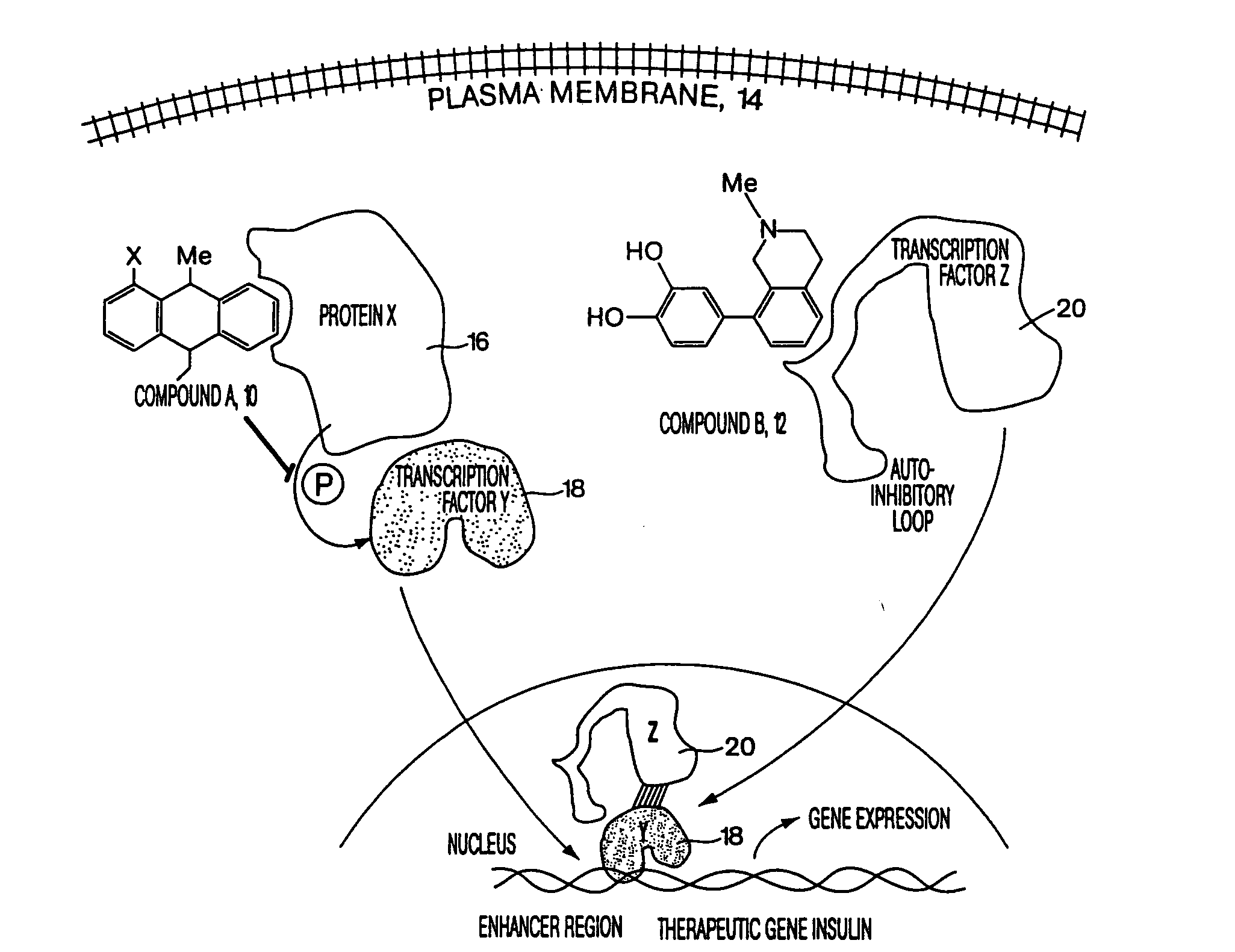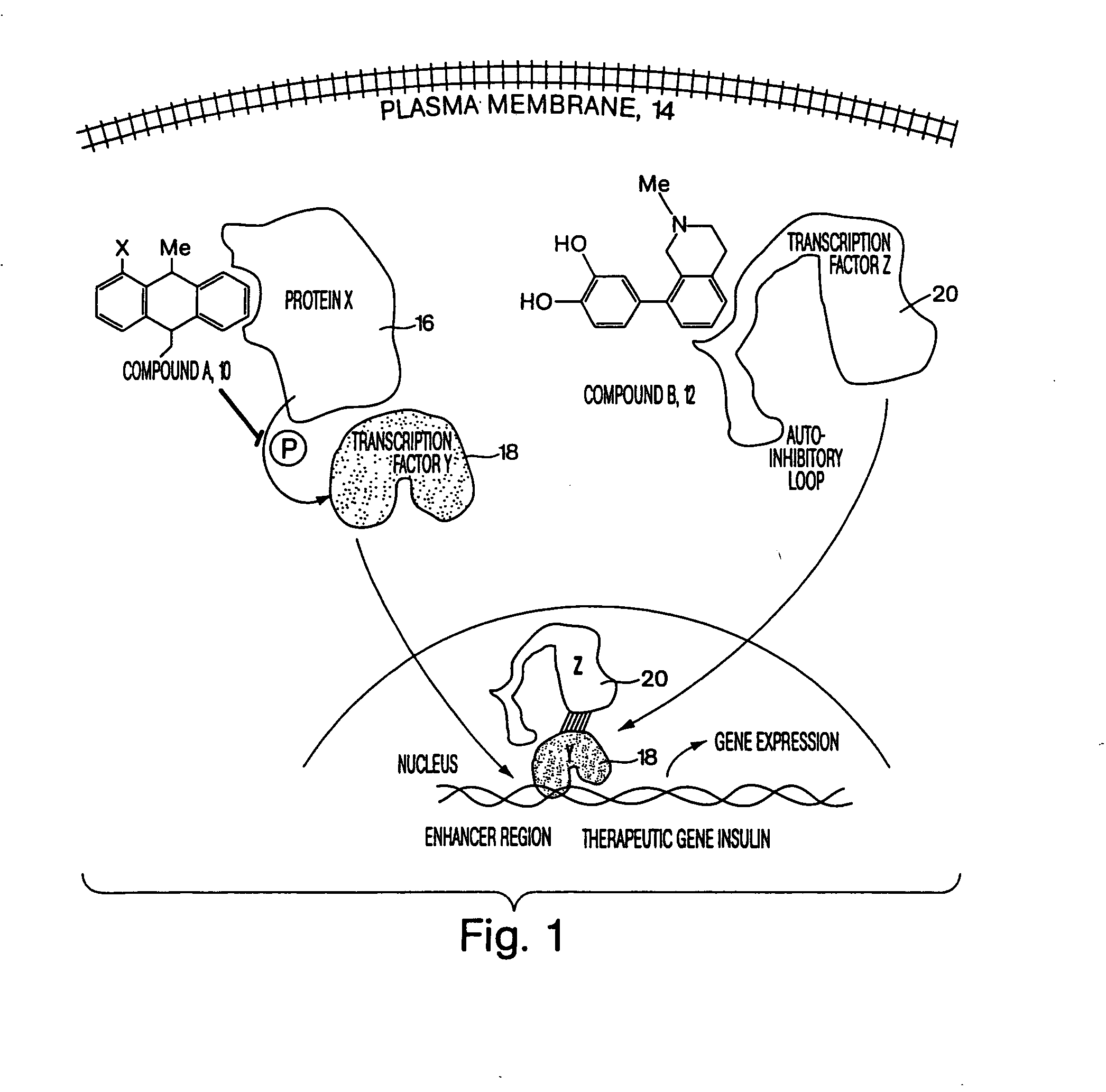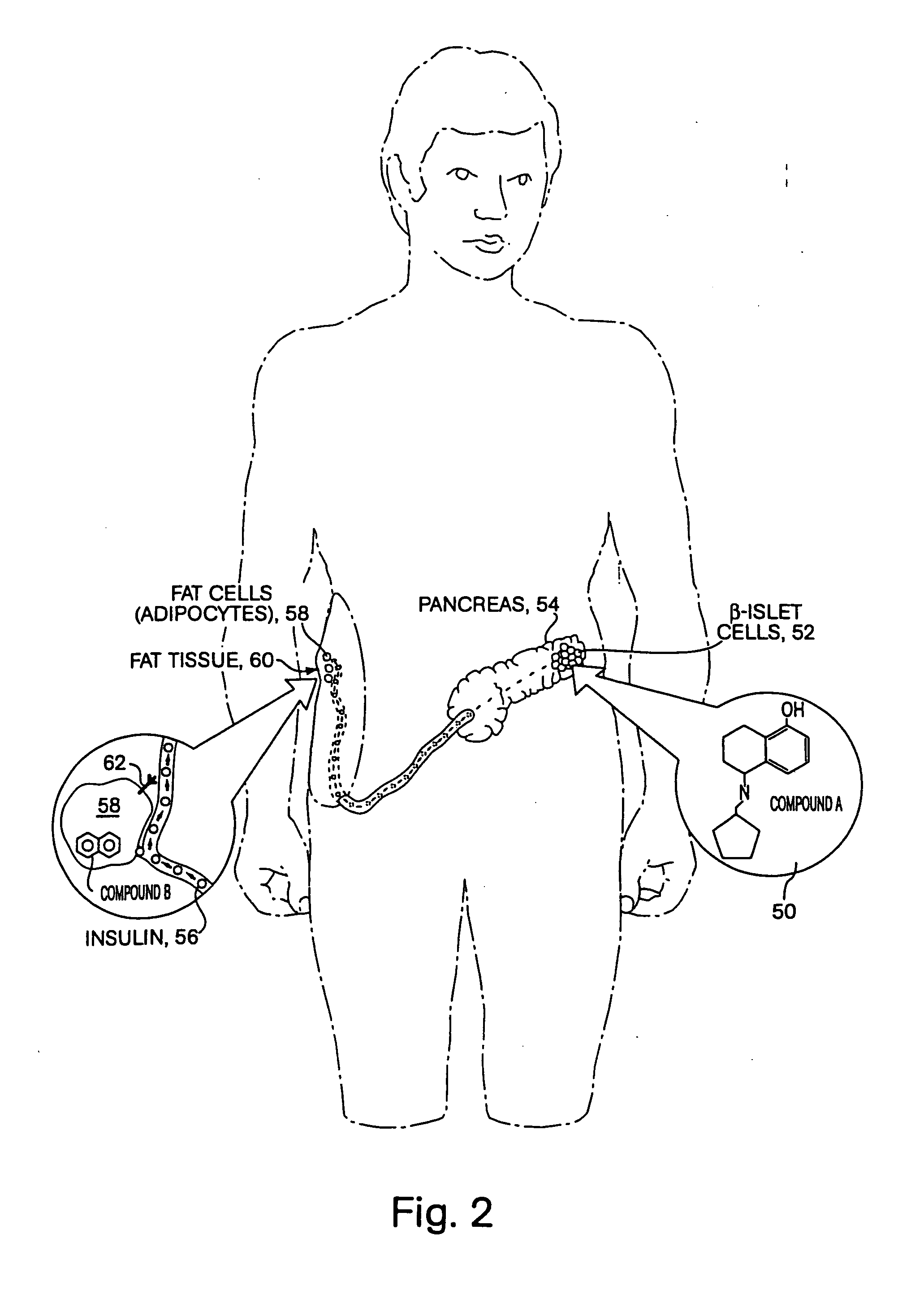Screening system for identifying drug-drug interactions and methods of use thereof
a drug-drug interaction and screening system technology, applied in the field of drug development and disease treatment, can solve the problems of insufficient treatment of many diseases by one drug and one target, insufficient one-drug-one-target approach, and undesirable interactions between two drugs, so as to achieve the effect of reducing pain
- Summary
- Abstract
- Description
- Claims
- Application Information
AI Technical Summary
Benefits of technology
Problems solved by technology
Method used
Image
Examples
example 1
[0099]FIG. 1 is a conceptual diagram demonstrating how two different reagents could act synergistically inside of a cell, where the reagents bind to different targets within the same cell. In this figure, compound A 10 and compound B 12 cross the plasma membrane 14 and diffuse freely into the cytosolic region of a mammalian cell. Compound A binds to protein X 16, which is a kinase, inhibiting the activity of this kinase. Kinase X normally inactivates transcription factor Y 18 by adding a phosphate group to Y. Once compound A has inhibited kinase X, transcription factor Y is activated, and Y translocates into the nucleus, binding tightly to DNA in the enhancer region of a therapeutic gene, such as insulin. However transcription factor Y is unable to activate expression of insulin without the presence of a second transcription factor Z 20. However, in the figure, compound B binds to transcription factor Z, removing an autoinhibitory loop on this transcription factor, thereby causing t...
example 2
[0102]General Methods
[0103]FIG. 4 is an illustration of a method for performing drug interaction screening using currently commercially available technology. Human cells are cultured in a suitable culture medium. Four thousand cells are seeded in each well of a white, opaque 384-well plate 100 (Nalge Nunc International, Rochester, N.Y.) using a Multidrop 384 liquid dispenser 110 (Labsystems Microplate Instrumentation Division, Franklin, Mass.). After 16 hours at 37° C. with 5% CO2, 10 μL of a 50 μM stock of a drug of interest in 10% medium is added to each well, bringing the total well volume to 40 μL and the final concentration of this drug to 10 μM. Either prior to, immediately afterwards, or several hours or days later, a set of drugs from a drug library is added by dipping small pins on a pin array 130 into each well of a stock plate 140 or 150 and then into each well of an assay plate 100. Matrix Technologies Pin Transfer device 130 (384 or 96 pins) will suffice (catalog number...
example 3
[0105]The identification of a combination of drugs that inhibit proliferation is described below.
[0106]Seven compounds were tested alone and in all 21 possible pair-wise combinations in the BrdU cytoblot assay (see below) for their effect on cell cycle progression. The seven compounds (podophyllotoxin, paclitaxel, quinacrine, bepridil, dipyridamole, promethazine, and agroclavine; each purchased from Sigma Aldrich Corp., St. Louis, Mo.) were weighed into one dram glass vials and dissolved in dimethylsulfoxide to create 4 mg / mL stock solutions. Six thousand A549 lung carcinoma cells were seeded in each well of a 384 white opaque NalgeNunc cell culture-treated plate (cat# 164610) in 30 μL of 10% medium (Dulbecco's Modified Eagle Medium containing 10% fetal bovine serum, 100 units / mL penicillin G sodium, 100 μg / mL streptomycin sulfate, and 2 mM glutamine, all obtained from Life Technologies). Each compound was diluted to four times the final assay concentration (final assay concentratio...
PUM
| Property | Measurement | Unit |
|---|---|---|
| Toxicity | aaaaa | aaaaa |
| Interaction | aaaaa | aaaaa |
Abstract
Description
Claims
Application Information
 Login to View More
Login to View More - R&D
- Intellectual Property
- Life Sciences
- Materials
- Tech Scout
- Unparalleled Data Quality
- Higher Quality Content
- 60% Fewer Hallucinations
Browse by: Latest US Patents, China's latest patents, Technical Efficacy Thesaurus, Application Domain, Technology Topic, Popular Technical Reports.
© 2025 PatSnap. All rights reserved.Legal|Privacy policy|Modern Slavery Act Transparency Statement|Sitemap|About US| Contact US: help@patsnap.com



